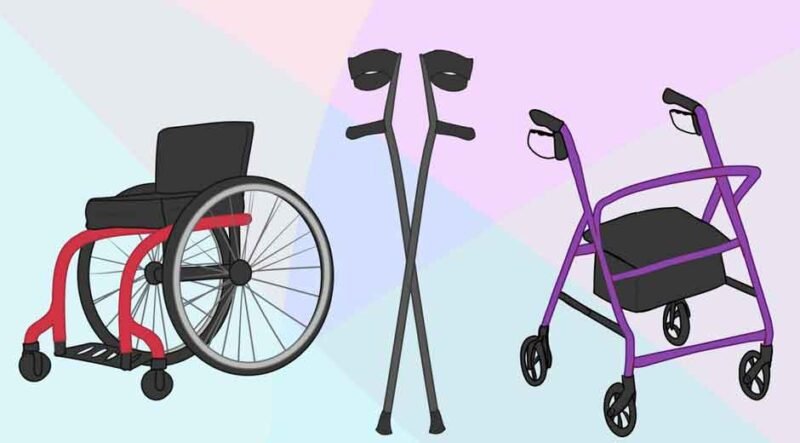
Seniors and anyone who can barely move independently due to a permanent or temporary injury will surely benefit from mobility aids. Given the many options available, the device a person uses will depend on individual needs and circumstances. Walking sticks, for example, are best for people with balance issues or who need help walking without straining or aggravating their injuries. They make handling day-to-day tasks more manageable.
Who Needs Mobility Aids?
Aside from people with limited mobility, mobility aids are helpful for a wide range of people, not just the elderly. These devices offer the support and stability needed to minimise the risk of falls and injuries.
If you’re caring for ageing parents, you might notice certain issues where a mobility device can help:
- They have balance issues and can barely stay upright on their own.
- They feel unsteady going up and down the stairs.
- They struggle walking on uneven surfaces or over short distances.
- They recently had a bad fall.
In some cases, a doctor or physiotherapist may recommend the use of a mobility device.
Who else needs to use mobility aids?
- People who are recovering from an injury or surgery, such as knee or hip replacement
- Those with multiple sclerosis, arthritis, and other chronic conditions
- People suffering from sprained ankles and other temporary injuries
What Mobility Aids Are Available?
Mobility aids have various shapes and sizes, and each type serves a different purpose.
- Walking Sticks or Canes
- Lightweight, portable, and may come with helpful features, such as an ergonomic handle and adjustable height
- Widely available and affordable, with some designed and sold at a premium
- Provides support for mild balance issues
- Crutches
- Designed for temporary injuries
- Helps take the load off injured legs
- Walkers (with or without wheels)
- It offers good stability, making it suitable for people who need significant support.
- Some wheeled walkers are designed with seats that a user can use to rest.
Other mobility aids are wheelchairs (manual or electric) and mobility scooters.
Ways to Select a Mobility Aid
- Level of Support Needed: A walking stick is good for those with mild mobility issues, while a walker or wheelchair is suited for those with more severe issues
- Ease of Use: Users should be able to handle the mobility aid independently, especially if they live alone.
- Portability: Opt for something lightweight or foldable if travel or transport is involved.
- Living Environment: If there are stairs and tight hallways to navigate, a wheelchair might not be the best option.
- Budget: Prices of mobility aids vary significantly, but subsidy funding or insurance may help lower it.
- Professional Advice: Consult a physiotherapist or occupational therapist to evaluate a user’s needs and provide the best options.
Regardless of the cause, people with mobility issues can maintain dignity and independence with the help of mobility aids. Combined with the right support, they can live a less stressful life. Are you looking for premium walking sticks? Visit Clover Canes today.

